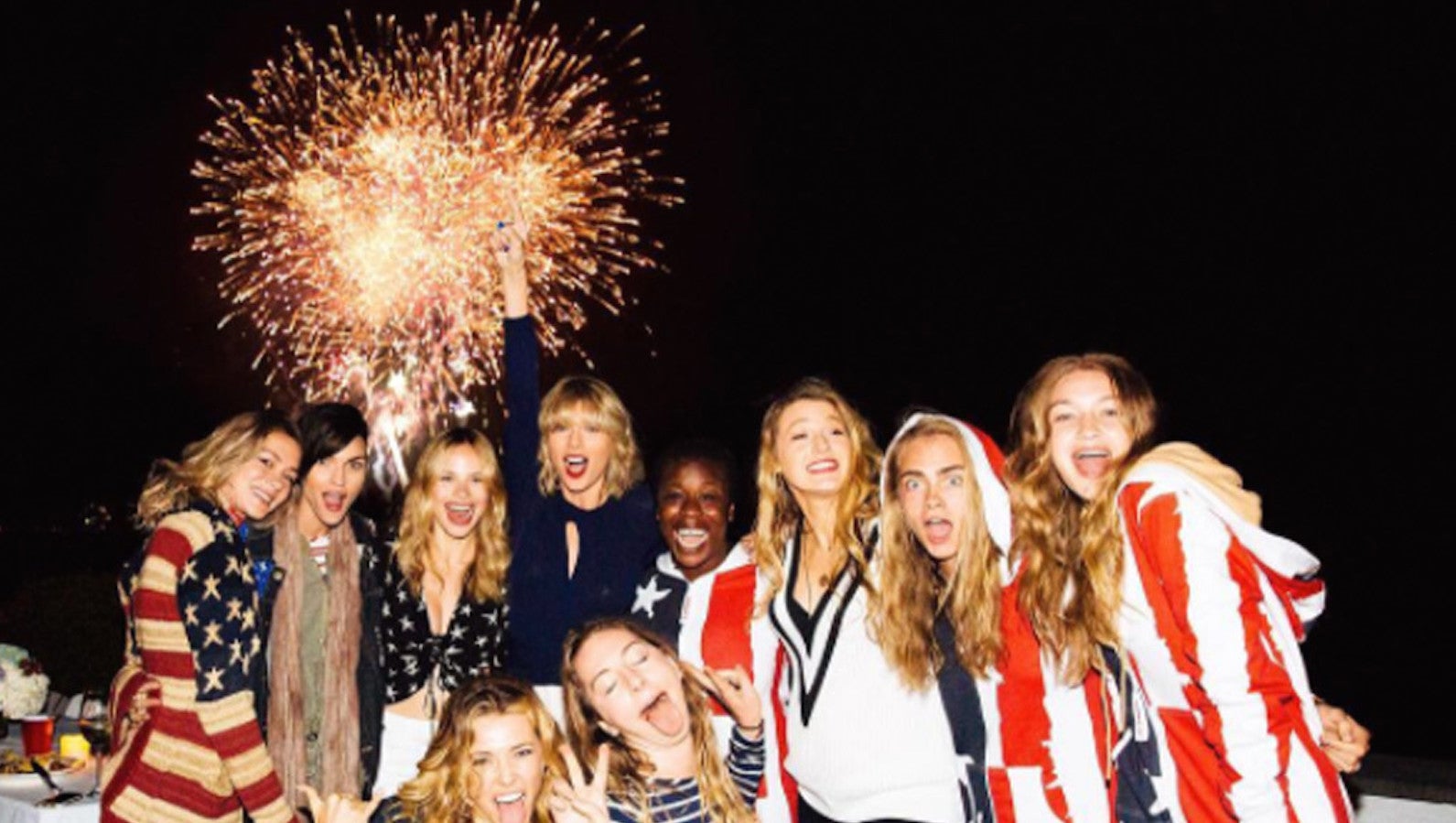Taylor Swift’s Instagram feed is ruining friendship for normal people
This Fourth of July, Taylor Swift hosted what looks like a pretty fun party. She also cemented her reputation (in my brain) as the nemesis of true female friendship.


This Fourth of July, Taylor Swift hosted what looks like a pretty fun party. She also cemented her reputation (in my brain) as the nemesis of true female friendship.
As Dayna Evans wisely observed in last year’s “Taylor Swift Is Not Your Friend,” the greatest trick America’s blond queen bee ever pulled was convincing the world that the gift of her friendship was about anything other than self-promotion. It’s one thing for celebrities like Karlie Kloss or Blake Lively to be card-carrying members of the Swift squad. Since they have star power in their own right, and their own public profiles to attend to, it’s unlikely that Swift is taking advantage of them.
But I do worry about how the glossy veneer of friendship that Swift presents on her tours, music videos, and social media will affect her devoted fan base of teenage girls and young women. In aspiring toward Swift’s model of friendship (#squadgoals), some may be more willing to make themselves ladies-in-waiting to their local queen bees, squelching their own interests and personalities in order to earn a coveted spot on a much-followed Instagram feed. Meanwhile, others will undoubtedly internalize their inability to find a squad of their own as a reflection of some deep inner flaw. If the proof of social desirability–as Swift suggests–is an endless stream of photographs featuring you and a dozen other girls, a whole lot of people are going to feel like failures.
There’s nothing inherently wrong with having a girl squad. Joshua Mandel, a psychologist at the New York University Child Study Center, writes that cliques done right “can have a strong positive effect on self-worth” and offer children and teenagers emotional support and a sense of belonging. Tight-knit circles can play an equally important role in the lives of grown women, as Alana Massey writes in her defense of cliques in The New Inquiry: “Maintaining a small group of friends is about quality control of the friendships themselves, not quality control of the group’s members.” Massey argues that contemporary society tends to bristle at cliques because we are suspicious of female intimacy, “particularly when it [is] shared between women with social capital.”
So what is disturbing about Swift’s squad is not that it exists, but her insistence on the public performance of friendship. In the Fourth of July photos posted on Instagram, Swift’s carefully curated friends are predominantly tall, white, thin, rich, and conventionally beautiful. Beachy-blond waves abound. The fashion is patriotic and color-coordinated. In large group photos, Swift is unfailingly positioned at the center of the pack, a stance that reminds everyone of her centrality to the group and her importance as its self-appointed curator.
🎉
A photo posted by Taylor Swift (@taylorswift) on Jul 5, 2016 at 11:32am PDT
This phenomenon isn’t unique to Swift. As Emily Witt notes in The New York Times, the age of social media has made laypeople equally prone to posting endless photos of their groups of girlfriends clinking brightly colored cocktails on rooftop bars and cavorting on weekend ski trips, creating ”a presentation of happiness, an advertisement for friendship rather than an actual portrayal of it.” In posting evidence of all the carefree fun we have with our friends, we seek to affirm our social status and reputations. (If I’m surrounded by beautiful, high-achieving pals, our inner gawky teen whispers, perhaps I am beautiful and high-achieving by association.)
But Swift goes further by turning the public display of friendship into an outright spectacle. In her video for “Bad Blood,” she assembles a star-studded collection of pals to avenge her against an ex-friend with whom she’s had a falling out. On her 1989 tour, she invited everyone from Lena Dunham to the US Women’s World Cup team to parade down the catwalk. At the 2015 Video Music Awards, her celebrity squad joined her on the red carpet, crossing their eyes and sticking out their tongues with the confidence of women who are unstoppably photogenic.
For Swift, friends are weapons; even the word “squad” is militaristic. But what is her mission? Based on the photographic evidence, it would seem to be convincing the world to shop at American Eagle in order to achieve peak white heteronormativity:
🇺🇸
A photo posted by Britany LaManna (@britmaack) on Jul 5, 2016 at 12:11pm PDT
What is clear is that in putting her friendships up for exhibition, Swift ultimately directs attention back to herself. When I read that the inflatable slide at Swift’s most recent bash was emblazoned with the slogan “Taymerica,” I actually laughed. There’s no better way to broadcast to the world that Swift’s group gatherings are truly all about her.
And so to the girls and young women who dream securing a coveted unicorn inner tube or American flag snuggie at a Swift party, I beg you: Rise up. Do not allow yourself to be cast as a supporting player in the life of an alpha girl, so closely identified as a member of her crew that every conversation you have inevitably leads back to her. Dismantle your squads and replace them with informal friendship communes, encouraging a spirit of peaceful collectivism and activities that have nothing to do with photo opportunities. Remember that you don’t need to belong to a text chain to be a person of value: Just as there are benefits to being a member of a close circle of pals, so are there rewards that come with having individual close friendships. And if you make a new friend who asks you to pose for a photo wearing matching bathing suits, forget the swimwear. Just take straight to the sea.